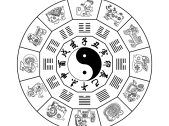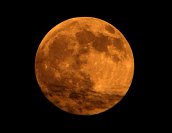China Overview
- Population: 1.3 billion
- Currency: yuan
- Guinness World Records: most people painting each other's faces simultaneously in one location (13,413), largest bottle of cooking oil (containing 3212 litres), most couples hugging (3009 couples).
- Internet users: 135 million
- Milk beer: from Inner Mongolia, an alternative to the traditional mare's-milk wine.
- Squirrel fish: whole mandarin fish deep-fried and manipulated to resemble a squirrel.
- Number of chinese characters: over 56,000
index Chinese Lunisolar Calendar
The Chinese calendar is a lunisolar calendar, which is based on exact astronomical observations of the sun's longitude and the moon's phases. Chinese lunisolar calendars takes into account both the phases of the moon and the season. First perfected around 500 BCE ,the Chinese calendar shares an established history , and plays an important role in the world and especially in Asian cultures. |
 | Where does the Chinese Luni-solar Calendar originates from ? The Chinese calendar dates as far back as the 14th century BCE. The Shang oracle bones give evidence of a lunisolar calendar which has been much modified but persists to this day. It is believed that the Emperor Huangdi introduced the calendar around 2637 BCE. It is also thought that his minister Ta Nao prepared the first calendar, which is translated as “the Chinese Luni- |
solar Calendar is modified and improved over time to adapt to practical use . It was not until 1912 that China stopped its resistance to the Gregorian calendar, but it was not widely used throughout the country until the Communist victory in 1949, when Mao Zedong, the chairman of People's Republic of China, ordered that the year should be in accord with the Gregorian calendar. |
Why is Chinese Luni-solar Calendar is so important ? Even though the Gregorian calendar is widely used in the world , for most East Asians today it is used for day-to-day activities .However, the Chinese calendar is still used for marking traditional East Asian holidays such as the Chinese New Year (or Spring Festival , which is the beginning for several lunisolar calendars), the Dragon Boat festival and the Mid-Autumn Festival. In astrology, the Chinese lunisolar calendar is used to choose the most auspicious date for weddings or other significant enterprises, such as a new
| 0719q.jpg)
|
construction project or an opening of a new business. Chinese lunisolar calendar guides agriculture production, and is usually a year divided into the four seasons namely Spring, Summer, Autumn and Winter. This is sufficient for most people but for the purpose of agriculture and Chinese metaphysics study. Therefore, each season is further divided into 6 sub-seasons, giving a total of 24 sub-seasons. These sub-seasons possess descriptive and vivid names such as rain water, insects awaken, corn rain and corn sprouting which remind farmers of the right time for planting and harvesting! Chinese lunisolar calendar is also used to determine the phases of the moon, each month follows one cycle of the moon, facilitating the research of astronomy. |
Why intercalary months are inserted into the Chinese calendar ? The Chinese calendar uses intercalary months to correct the deviations of the calendrical year from the astronomical year. Because the Chinese calendar is mainly a lunar calendar, its standard year is 354 days, whereas the astronomical year is approximately 365? days. To prevent this deviation from building up over time, an extra month is necessary. Thus, the intercalary month serves a valuable purpose in ensuring that the year in the Chinese calendar remains approximately in line with the astronomical year. The practical benefit of this system is that the calendar is able to approximately keep in pace with the solar cycle, as well as with lunar cycles. The latter is important because many traditional festivals correspond to significant events in the moon's cycle. For example, the mid-autumn festival is always on a day of the full moon. |
| What are the traditional Chinese holidays in The Chinese calendar year ? The Chinese calendar year has nine main festivals, in which seven are determined by the lunisolar calendar, and two derived from the solar agricultural calendar. Farmers used an agriculture calendar with its twenty-four terms, to determine when to plant crops, for the the lunisolar traditional calendar is not so accurate. The two special holidays are the Qingming
| 
|
Festival and the Winter Solstice Festival, falling upon the respective solar terms. |
| Below shows the traditional Chinese holidays : |
Date | English | Chinese | month 1 day1 | Chinese New Year
(Spring Festival) | 春節(jié)
Chūnjié | month 1
day 15 | Lantern Festival | 元宵節(jié)
Yuánxiāojié | April 4
or 5 | Qingming Festival (Clear and Bright) | 清明節(jié)
Qīngmíngjié | month 5
day 5 | Dragon Boat Festival | 端午節(jié)
Duānwǔjié | month 7
day 7 | Night of Sevens | 七夕
Qīxī | month 7
day 15 | Ghost Festival (Spirit Festival) | 中元節(jié)
Zhōngyuánjié | Mid-Autumn Festival (Moon Festival)[7] | Mid-Autumn Festival (Moon Festival) | 中秋節(jié)
Zhōngqiūjié | month 9
day 9 | Double Ninth Festival (Double Yang) | 重陽(yáng)節(jié)
chóngyángjié | month 10
day 15 | Xia Yuan Festival | 下元節(jié)
Xiàyuánjié | Dec 21
or 22 | Winter Solstice Festival | 冬至
Dōngzhì | month 12
day 23 | Kitchen God Festival | 謝灶
Xièzào | |

HOTMost Popular Topics

There is no sincerer love than the love of food.

Because of its size, China has great climatic diversity. Generally, the best time to visit China is during spring and autumn.

Chinese is the most commonly used language in China, and one of the most commonly used languages in the world.

China has many traditional festivals, including the Spring Festival, the Lantern Festival, the Dragon Boat Festival.

In the Chinese zodiac, twelve animals are used to denote the year of a person's birth: rat, ox, tiger, rabbit, dragon.

China, one of the world's most ancient civilizations, has a recorded history of nearly 4,000 years..